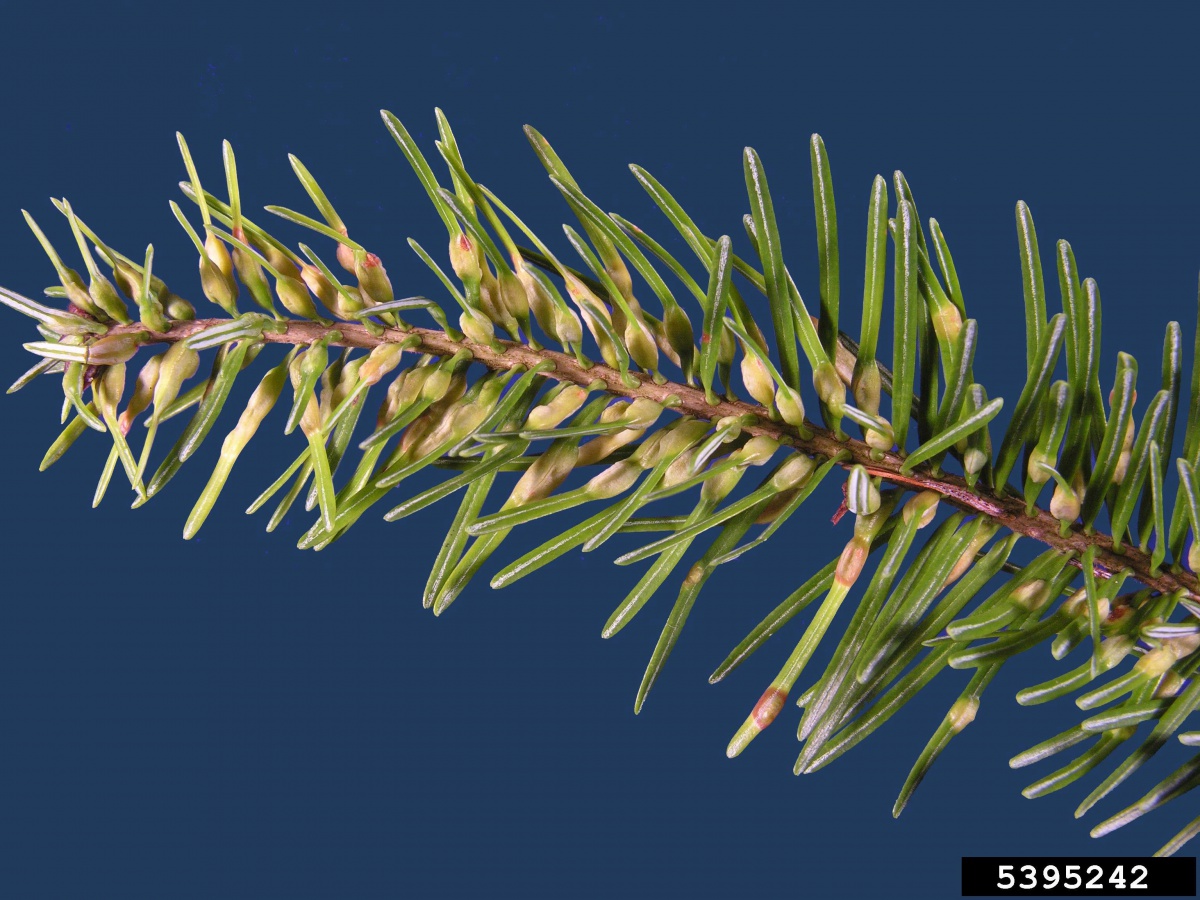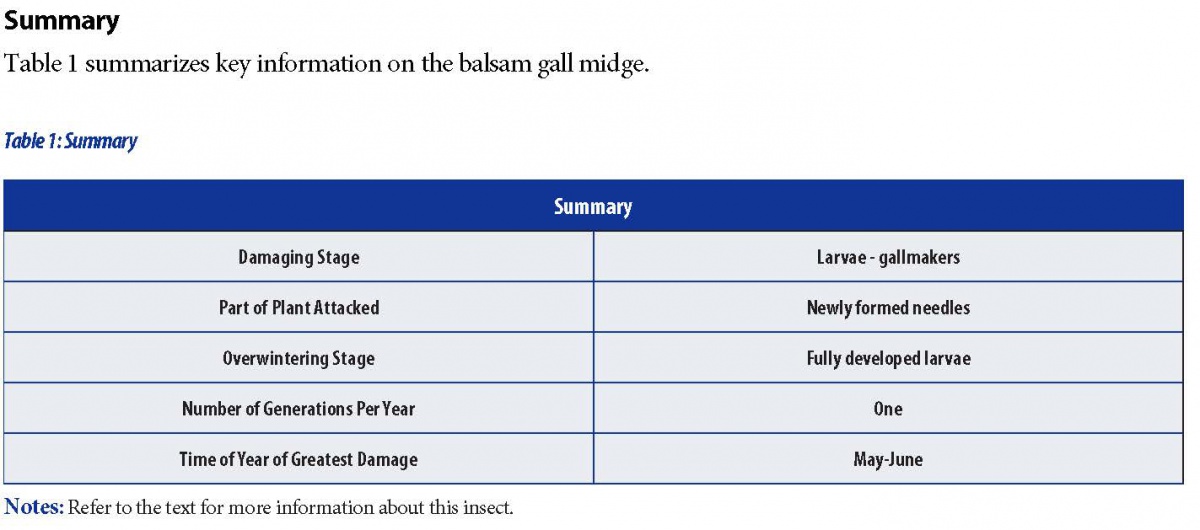The Balsam gall midge (Paradiplosis tumifex), also known as the Balsam fir needle gallmaker, causes damage to balsam fir Christmas trees in many areas of the northern United States and southern Canada. Its distribution closely parallels the range of its hosts, Balsam fir and Fraser fir. Injury to these hosts results from the formation of galls near the base of infested needles and the loss of foliage. Up to 50-60% of the current year’s foliage is commonly affected. These galled needles then drop from the trees in fall.
Description and Life Cycle
There are three immature stages which develop within galled needles. All are somewhat elongate with a broad head and a body that tapers posteriorly. At first, the larvae are whitish but gradually become orange.
Adults emerge in May over a period of two weeks; males usually emerge first. The adults are 1/8” long. Females are orange and often seen on new shoots of Balsam fir. Midges are weak fliers and are most commonly seen on calm, sunny days.
Soon after mating, adult females lay eggs beneath fir bud scales and on needles of newly opened buds. The larvae develop within the elongating needles and cause the swellings. There is only one generation per year.

of Forests, Parks, and Recreation, Bugwood.org.
Management
IPM Strategies:
- Cultural Practices - Remove and burn heavily infested branches or trees before infested needles drop to the ground in late summer or early autumn.
- Monitoring - Use emergence traps to detect the presence of adult midges. Traps can be simple bottomless wooden boxes with a hole on the side replaced with a clear vial or Plexiglass so it is exposed to light. Place the traps beneath previously infested trees in early May. Look for galls from June to October. Sticky yellow cards or boards can also be used in previously infested trees.
- Biological Control - A few parasitic gall wasps (Platygaster spp. and Dasineura spp.) may provide biological control. These wasps are another type of midge but do not damage trees. They can help control a Balsam gall outbreak. The use of Dasineura spp. is one reason experts recommend being cautious when spraying for Balsam gall, lest we kill the good guys, too. If only a few galls are present, leave them in place to conserve natural enemies.
- Chemical Control - Populations of this pest are cyclical; no sprays are necessary in years when populations collapse. Balsam gall midges occur for 3-4 years but are not be present for several years thereafter. The decision to spray is subjective and is based on how heavily trees are infested. Monitor trees frequently for damage. Only consider control once more than 10% of the current shoots have galled needles.
Consult your county Extension Field Specialist for specific recommendations.

Stop! Read the label on every pesticide container each time before using the material. Pesticides must be applied only as directed on the label to be in compliance with the law. All pesticides listed in this publication are contingent upon continued registration. Contact the Division of Pesticide Control at (603) 271-3550 to check registration status. Dispose of empty containers safely, according to New Hampshire regulations.
Download the resource for the complete factsheet.
